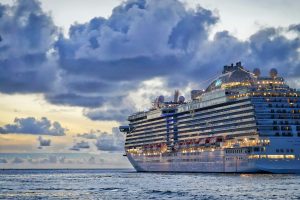Europe’s Largest Electric Ship Sets Sail in Sauerland

A Revolution in Lake Travel
Attendorn – A quiet revolution is underway on the waters of Sauerland, where the Biggesee now hosts the EMS Westfalen, Europe’s largest fully electric passenger vessel. Since its debut in May 2023, the ship has attracted not only curious tourists but also widespread acclaim as a symbol of environmentally friendly tourism.
Formerly known as the MS Westfalen, the vessel underwent a complete transformation during the winter of 2022/2023. The addition of “E” to its name signifies its new identity as an electric ship. Equipped with over 300 batteries delivering a total power of two megawatts, the 45-year-old ship now glides silently across the water, free of diesel engines. According to the operator, a dedicated transformer station at the harbor ensures the batteries are fully recharged overnight.
A Green Giant on the Water
With a length of 55 meters, a width of 11 meters, and a capacity for 750 passengers, the EMS Westfalen stands as the largest vessel of its kind in Europe. The retrofit not only modernized the ship but also cut annual carbon dioxide emissions by approximately 165 tons.
Passengers can enjoy a 90-minute round trip starting and ending in Olpe-Sondern. From there, clear signage directs visitors to nearby attractions. One of the most popular stops is the “Biggedamm” station, providing easy access to the Skywalk Biggeblick and the renowned Atta Cave. Tickets are priced at €17 for adults and €9 for children, with a special offer allowing birthday celebrants to travel for free.
Charting the Future of Electric Water Transport
The EMS Westfalen is just one element of an ambitious vision by Lux-Werft und Schifffahrt GmbH, which aims to transition all excursion vessels in Sauerland to environmentally friendly propulsion systems under the “Green Fleet Sauerland” initiative. The ship’s sister vessel, the EMS Bigge, joined the fleet in 2024, also operating fully on electric power. Meanwhile, the EMS Sorpesee, another electric-powered ship, is already in use on the nearby Sorpesee.
This ongoing effort marks a significant step forward in the drive to reduce carbon footprints and promote sustainable tourism, setting a compelling example for the future of waterborne travel across Europe.





